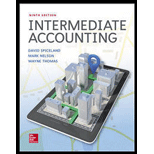
Concept explainers
(1)
Current and Long-Term Liabilities: Liabilities are referred to as the obligations of the business towards the creditors for operating the business. Liabilities may be short-term or long-term depending upon the time duration in which it is paid back to the creditors. Liabilities are classified in to current liabilities and long-term liabilities. Current liabilities are those liabilities which need to be paid within a year. Long-term liabilities are those liabilities that have longer maturity period.
Financial Statements: Financial statements are condensed summary of transactions communicated in the form of reports for the purpose of decision making. The financial statements reports, and shows the financial status of the business. The financial statements consist of the
Financial Disclosures: Financial disclosures refer to all material, significant and relevant information about the reporting organization that are essential to understand the financial statements of the organization entirely. It also helps to evaluate the performance and the financial health of an organization. These disclosures are either provided on the face of the financial statement or as notes to the financial statements as supporting schedules.
GAAP:
Generally Accepted Accounting Principle (GAAP) is a common set of accounting principles, standards, and procedures that the companies must follow at the time of preparation of the financial statements.
IFRS:
International Financial Reporting Standard is abbreviated as IFRS. The IFRS is set up to bring a standard global language in accounting, so that the other firms across the globe can understand the accounting term of all other businesses.
To indicate: The treatment for the amount mentioned as per IFRS and GAAP.
(2)
Liabilities as per GAAP and IFRS.
Want to see the full answer?
Check out a sample textbook solution
Chapter 13 Solutions
INTERMEDIATE ACCOUNTING (LL) W/CONNECT
- Reynolds Corporation shipped out an order on March 10th (FOB destination) for a total of $21,450.75. The terms of payment are 3/15 net 45. The order arrived on March 12th. $1,875.30 worth of inventory was returned on March 13th since the customer was not satisfied with these units. On March 15th, a credit of $4,125.60 was granted since some items were slightly damaged, but the customer decided to keep them. The customer made the payment on March 18th. What is the balance in the Accounts Receivable (AR) account on March 14th?arrow_forwardYardley Electronics purchased 3,500 tablets and has 600 tablets in its ending inventory at a cost of $120 each and a current replacement cost of $110 each. The net realizable value (NRV) of each tablet in the ending inventory is $95. The ending inventory under the lower-of-cost-or-net realizable value (LCNRV) is?arrow_forwardWhat is monroe manufacturings operating income? General accounting questionarrow_forward
- Kindly help me with accounting questionsarrow_forwardCorrect answer pleasearrow_forwardA fertilizer manufacturing company has an industry average P/E ratio of 20. The company's earnings per share (EPS) are projected to be $6.50. What should be the company's share price based on the industry P/E ratio?arrow_forward
 Individual Income TaxesAccountingISBN:9780357109731Author:HoffmanPublisher:CENGAGE LEARNING - CONSIGNMENT
Individual Income TaxesAccountingISBN:9780357109731Author:HoffmanPublisher:CENGAGE LEARNING - CONSIGNMENT Cornerstones of Financial AccountingAccountingISBN:9781337690881Author:Jay Rich, Jeff JonesPublisher:Cengage Learning
Cornerstones of Financial AccountingAccountingISBN:9781337690881Author:Jay Rich, Jeff JonesPublisher:Cengage Learning





